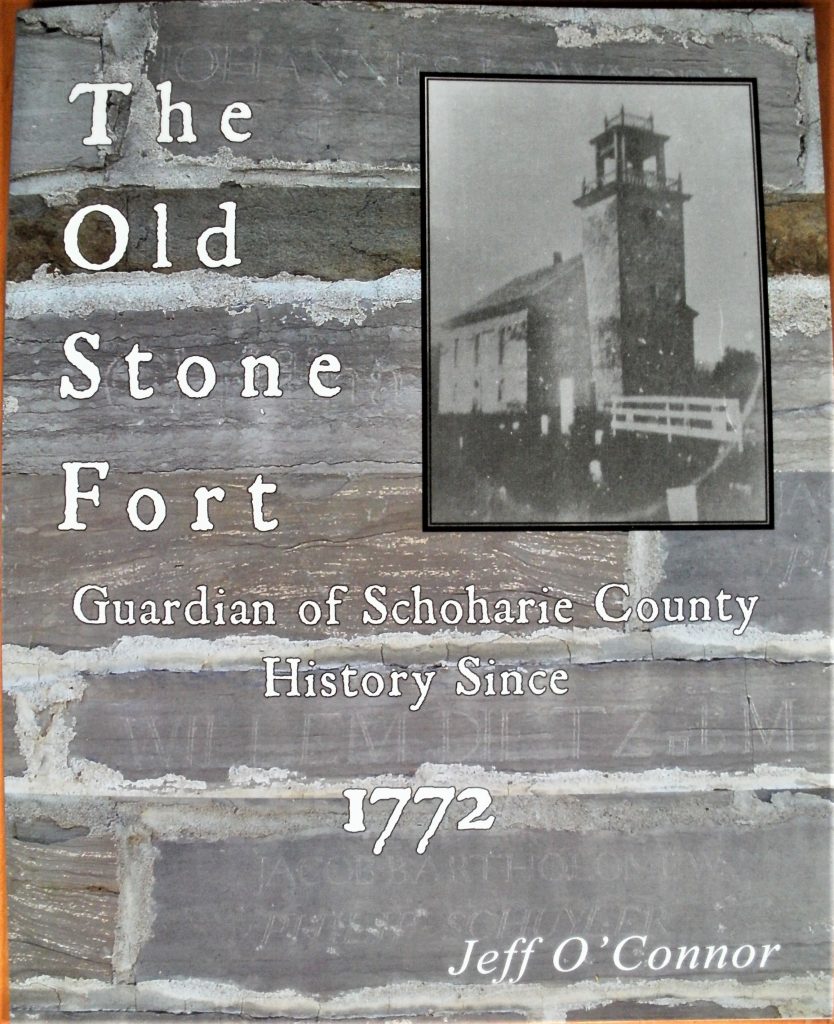NEW BOOK!
AVAILABLE NOW!
The opening paragraphs of the book’s introduction:
“The stone building that the High Dutch, or German, Reformed Church of Foxes Town built in 1772 as a meeting place was never meant to be a fort. Or an arsenal. Or a museum. It was intended solely to be a church that served its congregation and community. If it wasn’t for the American Revolution that was all it might have ever been.
The stone church was one of three strong Schoharie Valley buildings fortified in 1777, just as the whole of upstate New York was entering the war for the first time to repel a British invasion out of Canada. Loyalists were organizing against local militias and the Six Nations Confederacy of the Haudenosaunee was breaking apart as sides were being chosen. There was chaos, uncertainty and a great deal of fear. People in the Schohary Valley settlements clung to the forts they built in different parts of the Valley. The church became part of the Lower Fort, a stone house five miles south became the Middle Fort stronghold, and a sturdy wood- frame home three miles south of that became part of Upper Fort. Loyalist and native-allied raids devastated the Schoharie District throughout the war. After each one, survivors took refuge in the forts. By the end of the war, just about every family in the district was living in one or another of these forts or new ones that were built to relieve overcrowding.
The Lower Fort stood for only eight years, but the impact of those eventful times is still felt today through the stories handed down from generation to generation; from survivors to their descendants. Even though this was actually the shortest use of the building in its existence, it resonates most deeply. Well before it was a museum it was a revered local treasure, the only part remaining of any of the Revolutionary War forts erected in Schoharie County. Moreover, it was an indelible part of the folklore upon which Schoharie County history was built: the fort that still showed the scars of battle – a hole a cannon ball made during the devastating Sir John Johnson Raid of 1780. It was the stuff of legend.
When the church had outlived its usefulness to the congregation, it was bought by the State of New York to be used as an arsenal. The best argument for saving and using the building was that it was part of a Revolutionary War fort. When the state no longer had use for the building, it donated the old church to Schoharie County specifically because it was part of a Revolutionary War fort. The County allowed it to be used as a “cabinet of mementos” of the Revolution before it granted permission to the Schoharie County Historical Society to house a museum. Time and again, people who were in a position to protect “the fort,” as it is affectionately called, stepped up and did so.
Over the years, the fort has withstood all the attacks nature and man have been able to muster. It has silently stood as a symbol of strength and perseverance through too many wars and turbulent times to count. Just as it did during the weighty days of the American Revolution, the fort as a museum has offered itself as a place of refuge and contemplation; if only for the amount of time it takes to snake through all the exhibits or walk the grounds. To visit is to step back to a time when just living in the Schoharie Valley region was enough to endanger your family and property. In many ways, the Old Stone Fort embodies the spirit of those people who lived in such perilous times and the things they had to endure to survive; and later thrive. To be sure, the American Revolution and its legendary local events presented the people of Schoharie County with a gift: the foundational steely backbone of perseverance. It is this raw determination to push through difficult times that the people of Schoharie County have had to tap into ever since the colonial period; most recently in the aftermath of the catastrophic 2011 flood.
Then, as in 1780, the Old Stone Fort stood as a place of refuge – a quiet harbor in the storm as it remained the only county property untouched by the flooding. One might say that the Old Stone Fort is the soul of the county that centers its identity, and what stands as a beacon of hope when times are tough.”
Follow the link for a synopsis of the book and its chapters HERE
You can purchase this book through our store HERE
or support the following retailers:
Old Stone Fort Museum, Schoharie NY (also online)
Fort Plain Museum, Fort Plain NY (also online)
Schoharie Valley farms, Schoharie, NY
Catnap Books, Cobleskill NY
NY Books and Ephemera, Hobart NY
Secret Caverns, Howes Cave, NY



